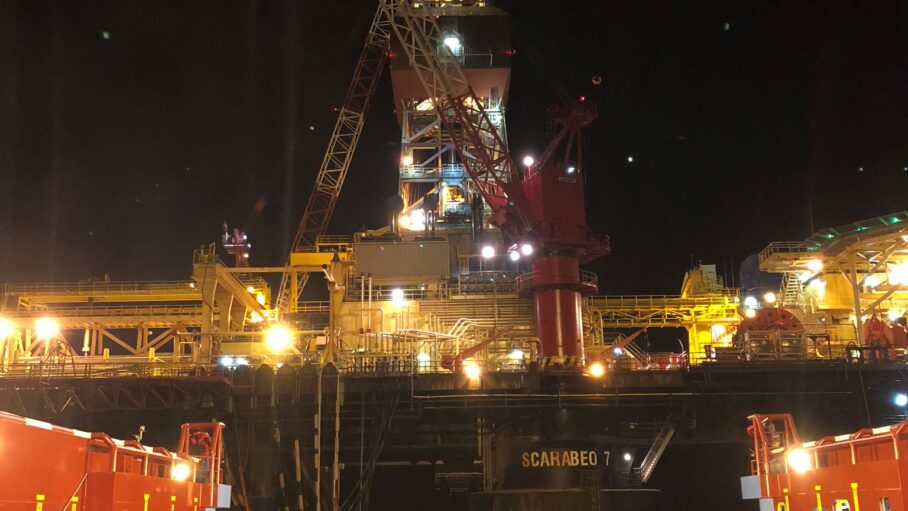THRUSTER ASSISTED MOORING ANALYSIS FOR THE WORLDS LARGEST DRILLING SEMI IN SHALLOW WATERS

Comparison of results from frequency and time domain analysis for a large drilling rig using Automatic Thruster Assist (ATA) in shallow waters.
Deep Sea Mooring was contracted by Lundin Norway to:
- Prepare a hydrodynamic model of West Bollsta.
- Design mooring systems for 5 wells on the Solveig field according to NMD “Ankringsforskriften 09” and DNVGL OS E-301 using MIMOSA, a frequency domain program for the analysis of mooring systems.
- Verify the offsets and line tensions from MIMOSA using SIMA with SIMO and RIFLEX as the numerical engines. Results from both operation and survival was investigated.
BACKGROUND
The background for the study was the paper; OMAE2018-77243 Benchmarking of analysis tool for thruster assisted mooring. The paper concludes that frequency domain analysis of a large thruster that assisted moored rigs can underestimate the vessel motions and the associated line tension. This is found to be the most critical for shallow waters.
Lundin will use West Bollsta with a displacement of 70,000t, thruster assisted moored in 100m water depth. With the knowledge above, Lundin decided to validate the results from frequency domain with time domain techniques using SIMA.
The first part of the project was to establish the hydrodynamic model, where the panel model was generated in MultiSurf and the hydrodynamic analysis was performed using a hybrid model in WADAM. Further, the wave drift force coefficients from WADAM was corrected to take into account viscous effects and wave-current effects.

The mooring spreads were then designed using MIMOSA where a simplified ATA model is included, together with statistical models, taking into account non-linear behaviour for both low frequent vessel motions and line tension providing more accurate results than most other frequency domain analysis tool for mooring analysis. Emphasis was also given to providing sufficient skidding capabilities for the rig and sufficient clearance to subsea infrastructure which is a challenge for a mooring spread with long fiber lines and shallow waters.
Next step was to calibrate the time domain model towards the established frequency domain model. This includes, but not limited to comparison of mooring line characteristics, static forces and offsets and comparison of response spectra for both offsets and line tensions.
Vessel motions were calculated by SIMO, while line tensions were found using RIFLEX to include line dynamics and SIMO only allows for quasi-static mooring lines.

The main conclusion from the study was that offsets and corresponding line tensions are underestimated by approximately 20% using frequency domain techniques. Based on this, Lundin decided to design a system where the safety factors are met using both frequency and time domain analysis and hence reduce the risk for the planned mooring operation.
FEATURES
Client: Lundin Energy Norway AS
Location: Solveig field, North Sea
Period: All-year
Main Contractor: Deep Sea Mooring
Services: Engineering





